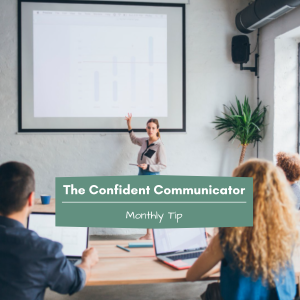It’s 9:00 a.m. Monday morning. You’re about to hear a 10-minute report from your manager. He begins his comments on cue. At the same time, he launches a 22-slide PowerPoint. You start to struggle. Where should you focus your attention? On his words? On the PowerPoint? Very soon your manager loses your attention. He also loses credibility, by making a very common mistake.
Whether selling a product, introducing an investment opportunity or communicating a corporate update, audiences want to “buy” from the presenter, not from a slide show. For far too long, the typical corporate presentation has been dominated by PowerPoint. When was the last time you sat through a corporate presentation that wasn’t driven by PowerPoint? Regrettably, the PowerPoint epidemic has been the death of many compelling messages.
2Connect frequently reminds clients of two secrets that can help them connect with and impact audiences:
- Audiences want a story
- Simple and concise are more impactful than sophisticated and complex
A third secret involves the role of PowerPoint in effective presentations:
- People buy from people . . . not from PowerPoint
What common mistake did the manager make? He let the PowerPoint “do the driving.” Rather than have it support his major points, he abdicated his authority and had the slides speak on his behalf.
What role, if any, should PowerPoint have in your presentations? 2Connect has many helpful tips to help you answer this question.
Tip #1: People buy from people…not from PowerPoint.
Audiences respect presenters who think and speak, not read, their presentation. The last thing audiences want is a recitation of PowerPoint slides that they can read themselves. Audiences expect presenters to take the leading role. A presenter who wisely uses PowerPoint in a supporting role will draw in audiences.
To ensure that PowerPoint not encroach on the leading role, presenters must challenge two ingrained assumptions: First, does every presentation require PowerPoint? And second, if the answer is “yes,” how much of the speaker’s information should be included on the PowerPoint?
Tip #2: Every presentation does not require PowerPoint.
Can you imagine “I have a dream?” highlighted in PowerPoint, as Dr. Martin Luther King, Jr., delivered his famous oration? The Gettysburg Address? Bulleted slides could do nothing to enhance or fan the passion of these historic speeches.
Extraordinary presenters exist today. Many have compelling messages. And most will get lost if they are translated to PowerPoint.
Why do so many presenters assume that PowerPoint will make every presentation better? A few factors contribute to its overuse.
First, PowerPoint has become the norm. It’s natural for presenters to want to fit in. Yet presenters should seek ways to differentiate their message. Using as ubiquitous a tool as PowerPoint is not always conducive to that.
Second, PowerPoint is easy to use. We can capture, animate and make last minute changes with dispatch. Unfortunately, this capability can prove deadly when it comes to connecting with an audience.
Presenters should ask themselves a few advance questions: “Does this presentation truly need PowerPoint? Will it help me connect with my audience? Will it help me better communicate my message? Would a flipchart or white board better illustrate my points?” Asking these questions will likely cause you to leave the laptop at home and realize that no supporting role is needed.
Tip #3: My entire presentation belongs on the PowerPoint slides.
Presentations are often enhanced by incorporating PowerPoint. Yet, have you ever seen a presenter stand up and read their text-laden PowerPoint slides? What’s your reaction? For many, it’s “This is a waste of time. Just give me the slides and I’ll read them myself.” The audience feels their precious time has been wasted. The presenter’s credibility heads south.
In their defense, some presenters don’t read everything on their slides. But think about it from the audience’s viewpoint. A slide comes up, slathered with text, while the presenter is talking. What does that force the audience to do? Choose. Choose whether to read the slides, listen to the speaker, or more likely, mentally check out. The message has simply become too difficult to absorb.
This presenter made the common mistake of competing with his own PowerPoint. In all presentations using PowerPoint, the speaker’s comments must be adroitly choreographed with the visuals he is incorporating.
Tip #4: Visuals should aid the message, not be the message.
Presenters are wise to revisit the purpose of visual aids. Visuals should aid the message, not be the message. Additionally, visual aids should not play the dual role of visual aids and handouts; they are two entirely different tools. Handouts are designed to provide the details and stand on their own. Visual aids should be simple. They need a presenter to bring them to life. In this case, one tool does not fit all.



